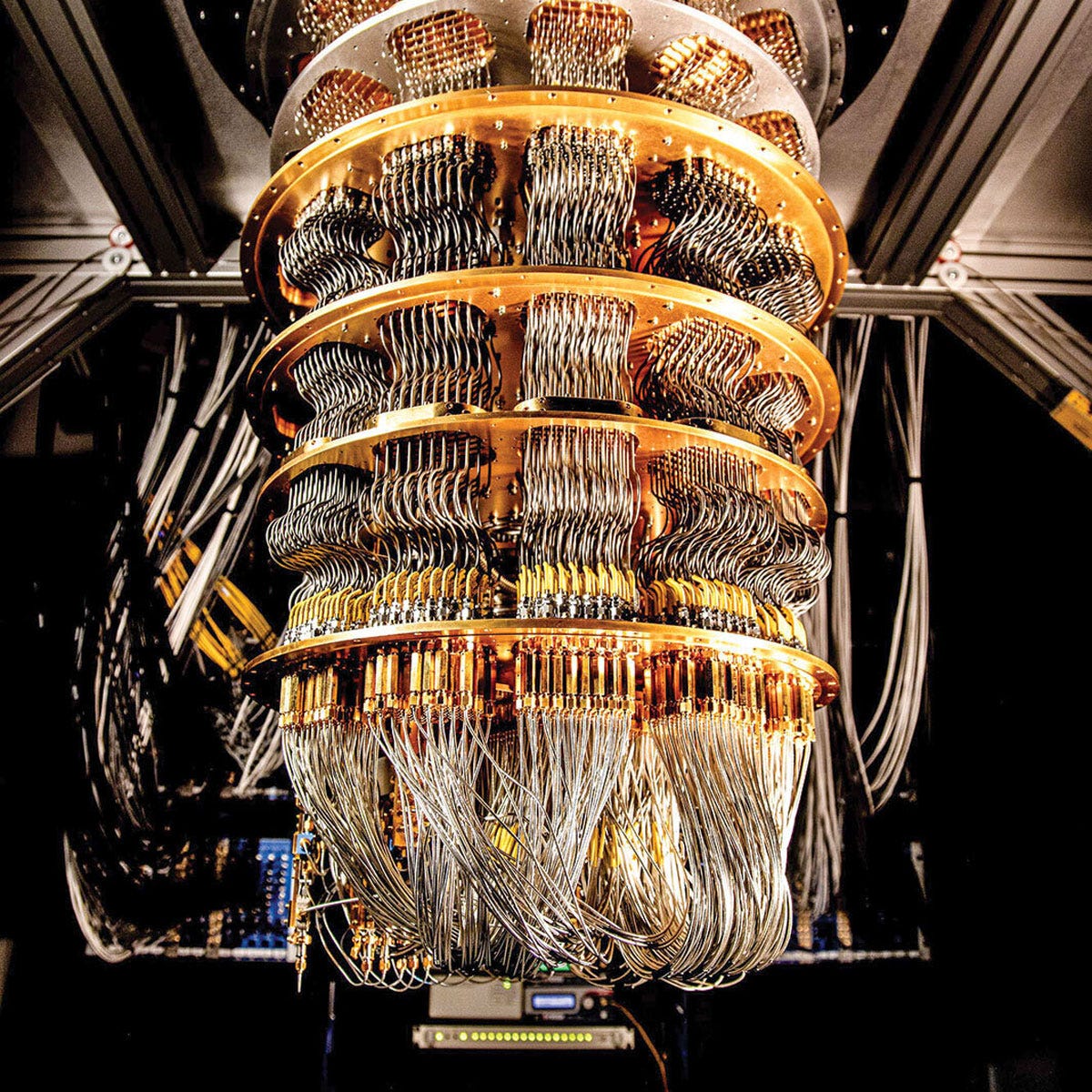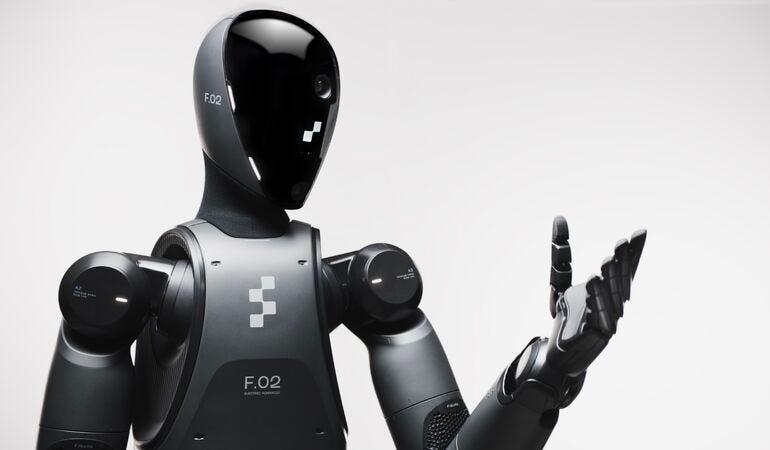Major Advancements in Quantum Computing and Robotics
From quantum leaps to robots that move like us, the future is arriving faster than you think. This edition dives into the latest advancements in quantum computing and robotics.
This past week has seen major breakthroughs in tech, particularly in quantum computing and robotics. I had planned to release a deep dive on a health tech company but with their earnings report coming early next week, I will wait until the results are out. The most exciting news for me was Microsoft unveiling their new quantum computing chip, Majorana. Quantum computing is complex, but I will simplify it as much as possible. I also plan to cover the major players in a future post. Before diving into why Microsoft’s breakthrough matters, let’s first break down what quantum computing is all about. This edition will focus more on the tech side rather than going into financials as these developments are significant beyond just stock performance.
Quantum Computing
Quantum computing is a completely different way of computing and has been in the works for a while now. While progress has been made, certain bottlenecks continue to slow its adoption. I will touch on those shortly. Firstly, a classical computer takes in binary inputs called bits which can be 0 or 1. These bits act as switches, controlling electrical flow through circuits to perform calculations. Quantum computers operate using quantum bits, referred to as qubits, and unlike classical bits, qubits can exist in a quantum state that is a combination of 0 and 1. This is possible due to superposition, a key concept in quantum mechanics. It is when a qubit exists in a combination of 0 and 1 until it is measured meaning that its state is described by a probability wave, and only when observed does it collapse into a definite value of either 0 or 1. So why does it matter that a qubit can exist in both states you may ask. Well, imagine trying to find the quickest route through a maze. A classical computer would check each path one by one, while a quantum computer, thanks to superposition, can explore multiple routes at the same time, dramatically speeding up the process. Another key concept is entanglement, where two qubits become interconnected so that the state of one instantly influences the other, regardless of distance. Entanglement helps quantum computers tackle complex calculations faster by creating a direct link between qubits, allowing them to work together in a highly coordinated way.
It all sounds great in theory but when being applied there are serious obstacles that have stood in the way of quantum computing. The three main ones are error correction, decoherence and freezing temperatures. Error correction is one of the biggest challenges. Qubits are incredibly fragile, and even the smallest disturbance like stray radiation or a tiny fluctuation in temperature can introduce errors in calculations. Unlike classical bits which can be easily corrected if they flip from zero to one, qubits require special techniques to detect and fix errors. Right now, building a single reliable logical qubit can take thousands of physical qubits, making large-scale quantum computing difficult.
Decoherence is another major issue. Qubits rely on delicate quantum states like superposition and entanglement, but these states collapse the moment they interact with their surroundings. Even heat, vibrations or tiny electromagnetic signals can cause qubits to lose their quantum properties, making calculations impossible. Keeping qubits isolated long enough to perform useful computations is one of the toughest hurdles in the field.
Then there is the temperature problem. Quantum computers need to be kept at temperatures close to absolute zero, colder than outer space, because heat disrupts quantum states. This requires complex and expensive refrigeration systems, making quantum computers far from practical for everyday use. The image below may look like the quantum computer itself, but the actual processor is tiny and hidden deep within the structure. What you see is actually a fridge. No, you cannot put your meat and vegetables in it if that was your initial thought. It is a highly specialised refrigerator designed to cool the quantum chip and keep its qubits stable at the ultra-low temperatures needed for computation.
I’m sure now you can see the problem with quantum computing and its scalability. Imagine having one in your home, would it be able to fit? To be fair quantum computers aren’t meant for personal use, at least yet. The focus for now is for it to tackle challenges in healthcare, cybersecurity and finance amongst many more areas. These challenges have slowed progress but Microsoft’s latest breakthrough could be a step toward solving them.
Microsoft’s Majorana Chip
I hope you have stuck with me so far because this is where it gets interesting. There are different ways to build a quantum computer. Most companies, like Google and IBM, use superconducting qubits, which are tiny circuits cooled to extreme temperatures to behave in a quantum way. Others use trapped ions where individual atoms are suspended in place using electric fields and manipulated with lasers to perform calculations. Microsoft has been trying something different by developing topological qubits, which could be more stable and less prone to errors. In most quantum systems, qubits are highly sensitive to disturbances from their environment, such as heat or electromagnetic interference. Even the smallest disruption can cause them to lose their quantum state, leading to errors in calculations. However, Majorana-based qubits are designed to be much more stable. Instead of storing quantum information in a single particle, the information is spread across multiple Majorana particles, making it much harder for errors to occur.
To achieve this, they are using topoconductors, a special type of material that allows the formation of Majorana particles. Unlike regular quantum particles, Majoranas act as their own antiparticles, meaning they naturally resist certain types of interference. Instead of encoding information in a single fragile qubit, Microsoft’s approach spreads it across multiple Majorana particles, reducing the risk of errors. This is done through a process called braiding. These particles are carefully manipulated in a way that locks in quantum information, making it much harder to lose. If this works as expected, it could drastically reduce the need for complex error correction, one of the biggest barriers to scaling quantum computers.
This has been Microsoft’s longest-running research project, spanning 18 years. Visually, it is an impressive chip but its real beauty lies in what it could mean for the future of quantum computing. For a long time, the idea of Majorana qubits was purely theoretical with many in the industry doubting they could ever be produced reliably. However, Microsoft now claims to have demonstrated a working version, marking a major milestone. The reaction has been mixed. Some experts see this as a breakthrough that could give Microsoft an edge in quantum computing. Others remain sceptical, as producing and controlling Majorana qubits has been notoriously difficult, and more testing is needed to confirm their reliability. If Microsoft can prove this method works at scale, it could be one of the most important steps toward making quantum computing practical. Off the back of this news, Microsoft shares were unchanged which contrasts Google’s jump higher when they released their Willow quantum chip in December 2024, which is also very impressive.

Quantum computing has been in development for years, but it remains largely a research project with vast potential yet no real commercial application. I firmly believe once the key hurdles are galloped over, quantum computers will change the world as we see it. Microsoft, Google, and IBM are the biggest names in quantum computing, but they are not the only ones pushing the field forward. Many other companies are making significant progress, and I will be covering them in a future edition. Make sure you are subscribed to receive a notification when it is published.
Moving on now to robotics.
Robotics
Clone Robotics recently released a video showcasing a robot suspended from the ceiling. Unlike most humanoid robots in development, which prioritise flexibility and strength over human-like movement, this robot is designed to replicate how humans naturally move. While current designs can offer advantages in efficiency and power, they often lack the dexterity and coordination of human motion.
Clone Robotics is attempting to bridge this gap with Myofiber technology, which aims to mimic the function of human muscles. This involves the use of artificial muscles, also known as synthetic muscles, that expand and contract in a way similar to real muscles, enabling more lifelike movement. The idea is to create robots that not only resemble humans in form but also in the way they interact with the world. Whether this approach will prove more effective than existing designs remains to be seen, but it represents a different take on how humanoid robots might evolve. Just a quick warning, the video below is quite creepy.
Elsewhere, Figure AI has introduced Helix, a system designed to make robots more adaptable by enabling them to process visuals, understand language, and take action without relying on pre-programmed instructions. In a recent demonstration, two Figure 02 robots worked together to organise household items, successfully handling objects they had never encountered before. This represents a shift towards robots that can learn and adjust to new environments with minimal human input.
What sets Helix apart is that it operates entirely on low-power GPUs embedded inside the robot, removing the need for external computing. This allows for real-time decision-making, making the robots more autonomous and efficient. Figure AI envisions this technology enhancing the practicality of humanoid robots, with potential applications in workplaces, logistics, and even home assistance. While still in development, Helix signals progress toward creating robots that can function independently in dynamic settings.
As AI continues to advance robotics, we will likely see even more breakthroughs, which will present unique opportunities for investors. The tech being built today is truly amazing, and I’m excited to see what the future holds.
Thank you for reading. I hope you enjoyed this edition. If you did, feel free to share it with colleagues, friends, or anyone else who might find it interesting. The next edition will feature a deep dive into a fascinating company, so make sure you subscribe to get it as soon as it is released.






